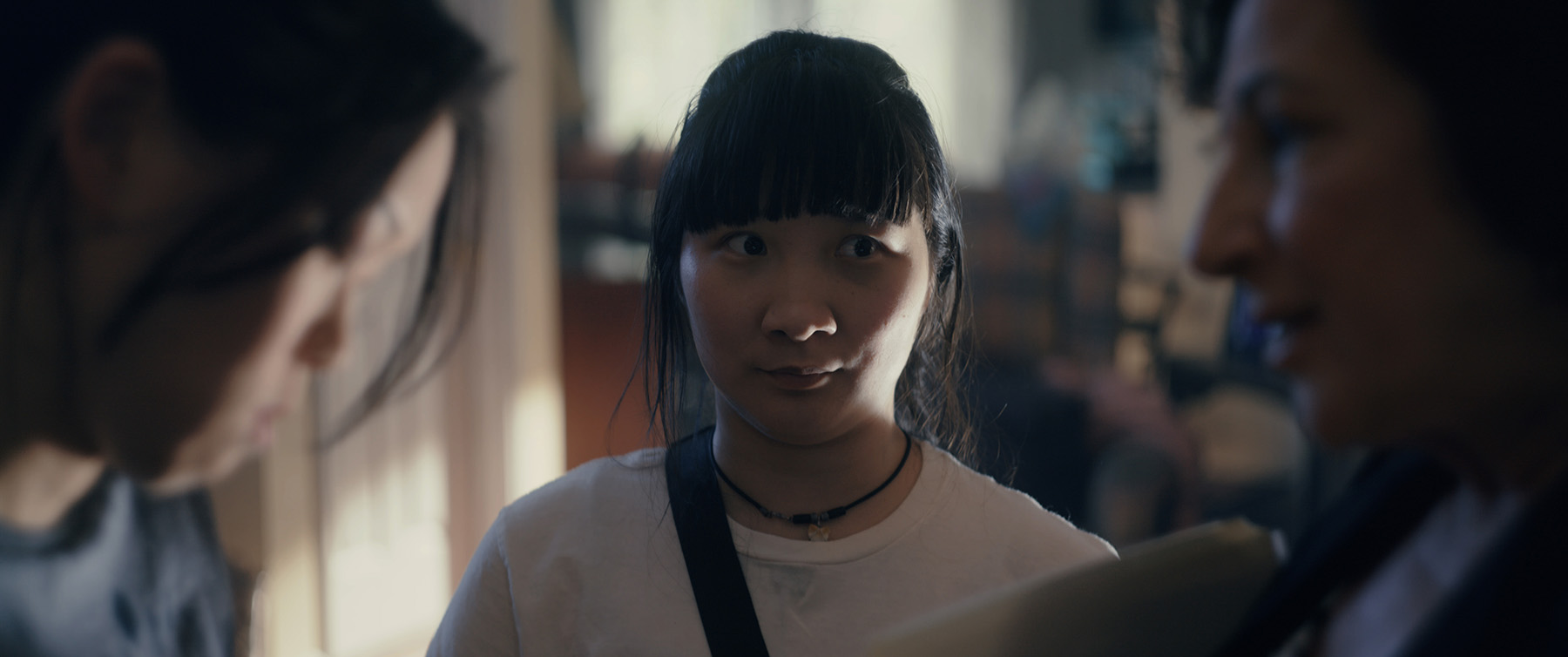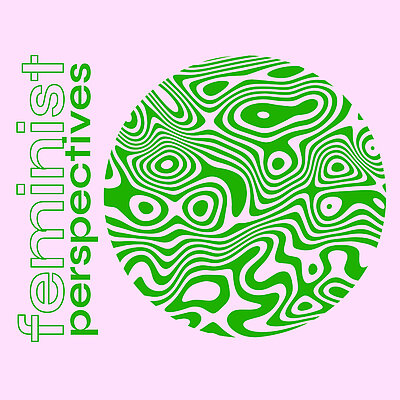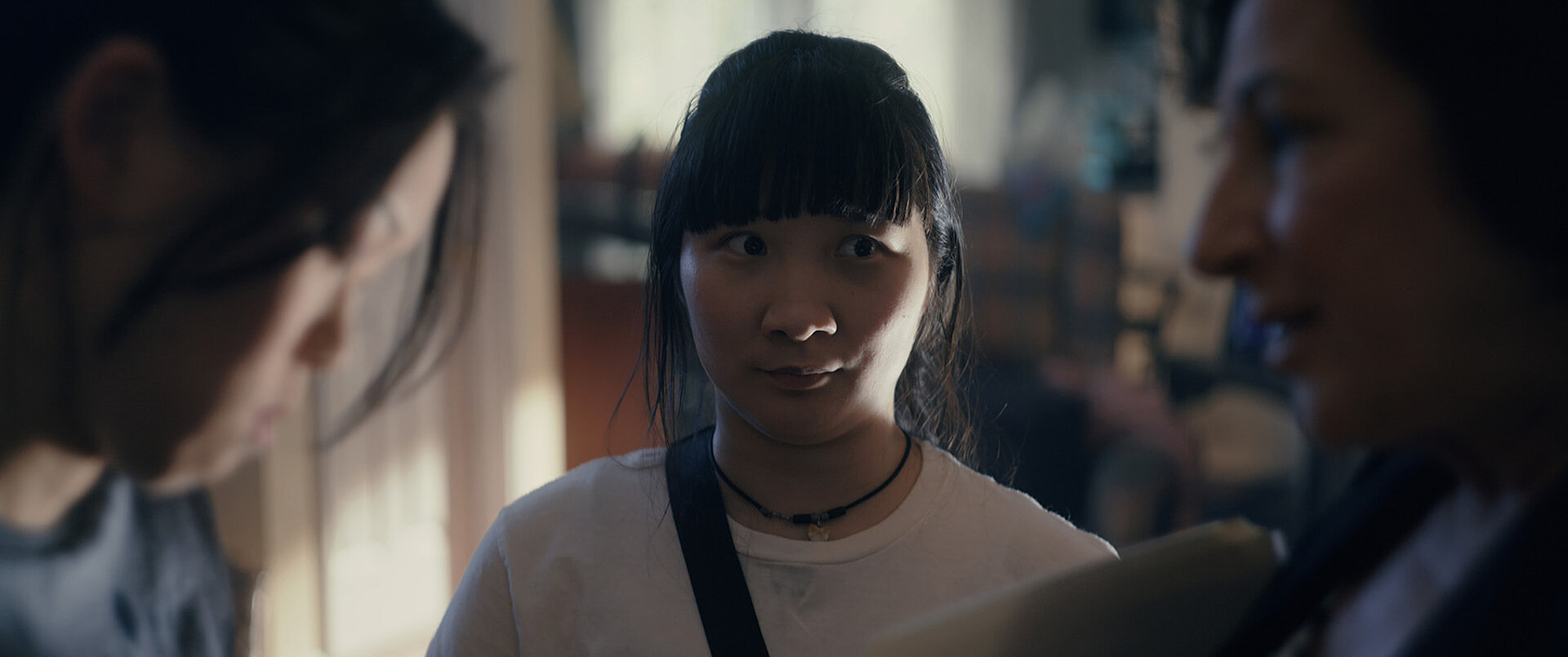
Sunday, December 7, 2025, 11 am to 1 pm
Feminist Perspectives
PROGRAM 5 | BEZIEHUNGSWEISEN II – Modes of… Unmasking, Thriving, Dissociating, Laughing, Appearing
Feminist Perspectives | Program 5 | BEZIEHUNGSWEISE(N) II – Modes of Unmasking, Thriving, Dissociating, Laughing, Appearing
What does it mean to be yourself when the world demands you be someone else? How do people navigate through spaces not made for them—through neurotypical norms, capitalist structures, visual codes, familial expectations? The fifth program continues the examination of intimate relationships from Program 4 but broadens the view to relationships with the self: to strategies of self-preservation, self-assertion, self-invention.
The title "BEZIEHUNGSWEISE(N)" refers to the diverse modes in which people with invisible, cognitive, or psychological disabilities shape their existence—modes often misunderstood as adaptive achievements but which are in truth creative survival strategies, forms of self-assertion, and acts of resistance. Unmasking, Thriving, Dissociating, Laughing—these terms in the subtitle name not deficits but practices through which people move through a world that does not provide for their ways of existing.
Michelle Lyons' and Joe Wilkie's short film Imposter shows how masking—concealing autistic behaviors to appear neurotypical—becomes a permanent performance that exhausts and alienates. Michelle feels like an imposter, not because she's incompetent, but because she's forced to continuously perform a neurotypical version of herself. The camera stays with the "incidental" moments: small talk at the supermarket checkout, smiling on the playground, polite formulas. What neurotypical people overlook becomes visible here: that life itself is a performance for autistic people, a constant work of translation. The film is hybrid, situated between documentation and essay, until at the end the real Michelle appears in the final shot—a surprising gesture of visibility.
Nicole Bazuin's Thriving: A Dissociated Reverie shows Kitoko Mai, Black, non-binary, disabled performance artists and former sex workers living with dissociative identity disorder (DID). The film makes Mai's inner multiplicity visible: different personality states, so-called "alters," that represent different emotional states and survival strategies. Instead of pathologizing DID, dissociation is understood here as a creative response to trauma and social violence. The central question is not how Mai can be "healed" but: "How to thrive in a capitalist hellscape?" The answer lies in radical self-acceptance of one's own multiplicity. The film moves between seriousness and irony; DID is neither dramatized nor trivialized here.
Liz Sargent's Take Me Home addresses communication beyond neurotypical norms. Anna, who lives with cognitive disability and little short-term memory, loses her mother. Her sister Emily, who moved to New York, returns home and takes over responsibility—without involving Anna in the process. The central question is: How can they understand each other when Anna's verbal abilities are limited? How can they transcend language? The film, in which Anna Sargent plays herself, makes visible what is usually excluded from Hollywood narratives: that people with cognitive disabilities are not merely objects of care but dimensional persons with their own perspectives, desires, and expertise. The production was adapted to Anna's needs—the scenes were developed through structured improvisation, with Anna retaining control.
Bernd Oppl's I Can't See You Laughing is a three-minute minimalist study of viewing habits and false expectations. In a completely black-designed sitcom set—couch, table, chairs, walls—the light only turns on when the canned laughter of imaginary audience members sounds. The brightness correlates with the volume of laughter. Between laughs: darkness, an empty stage. Oppl makes visible what is otherwise consumed unquestioned: the structures that regulate visibility. Oppl's experiment thus becomes a metaphor for invisible disabilities—for all those who are only "made visible" at certain moments, under certain conditions, while remaining in structural invisibility the rest of the time.
The four works follow a common principle: they make invisible labor visible—the labor of masking, of surviving, of making oneself understood, of navigating through structures not made for one. They show that adaptation is not the solution but the problem.
At the same time, the films refuse to show their protagonists as victims. Michelle masks, but she appears at the end. Mai dissociate, but they thrive. Anna communicates differently, but she communicates. Oppl's empty stage is periodically illuminated. These films show people who have developed strategies—not because they want to, but because they must. But in these strategies also lies resistance, the refusal to remain invisible.
These films make clear that there is no "right" way to have a disability, no "right" way to be autistic, dissociative, or cognitively disabled. There are only different modes of existing, of relating to the world, of navigating through structures that want to exclude one. Imposing, Unmasking, Thriving, Dissociating, Laughing—these are not dysfunctions but techniques of survival.
"Beziehungsweise(n) II" thus connects to the question of intimate, sexual, familial relationships from the previous program, which understands love and sexuality as political terrain. Here another dimension is added: the relationship to one's own self—or better, to the different selves one must be, can be, wants to be. The question is no longer only how we relate to each other, but how we relate to ourselves when the world forces us to be someone else. The mask is not the solution. The solution is visibility. The solution is self-determination. The solution is that the world changes.
Information
PROGRAM 5
Sunday, December 7, 2025
11 am to 1 pm
BEZIEHUNGSWEISEN II – Modes of… Unmasking, Thriving, Dissociating, Laughing, Appearing
- Imposter (Michelle Lyons, Joe Wilkie, AU 2024, 6 min) OV (EN)
- Thriving: A Dissociated Reverie (Nicole Bazuin, CA 2023, 10 min) OV (EN)
- Take Me Home (Liz Sargent, USA 2023, 16 min) OV (EN)
- I Can’t See You Laughing (Bernd Oppl, AT 2024, 3 min)
Followed by a conversation with
Bernd Oppl (conversation in German, ÖGS)
Moderation: Constanze Ruhm
Admission and screening is free; all you need to do is register online for a ticket. Please register for the slots only, that you can attend in person. Please exchange the ticket at the box office for a wristband, which also grants you free admission to all exhibitions at mumok on that day.
The organizers want to make it easy for everyone to join in by offering free admission, but appreciate a voluntary donation to help cover the costs. You will find the donation box at mumok cinema.
FILM SYNOPSES PROGRAM 5
Michelle feels like an imposter. She has an invisible disability that she hides through "masking"—that survival strategy where autistic people conceal their neurological differences to function in a neurotypical world. The illusion that she has everything under control is exactly that: an illusion. The film follows Michelle through banal everyday situations—shopping, conversations, social interactions that run effortlessly for most people. But for Michelle, these are precisely the most exhausting moments: here the mask runs at full capacity.
Imposter makes the invisible visible. "Masking" is a form of emotional and cognitive labor that is not recognizable from the outside. Autistic people learn early to suppress stimming, maintain eye contact, follow social scripts, imitate facial expressions—all of which costs enormous energy and leads to burnout, depression, identity loss. Therefore the film title alludes to "imposter syndrome," that feeling of being a fraud, not authentic. But Michelle is not an imposter; she is forced to maintain a neurotypical performance to survive.
The camera stays with the seemingly incidental moments—small talk at the supermarket checkout, smiling on the playground, polite formulas. What neurotypical people overlook becomes visible here: that life itself is a performance for autistic people, a constant work of translation.
The film is based on the life of Michelle Lyons, an autistic mother of an autistic son. The film thus also touches on questions of intergenerational transmission: Will Michelle teach her son Caleb to "mask," to hide, as she had to? Or can she show him a different path? All archival footage comes from Lyons' personal material. Imposter is a hybrid work between documentary and experimental essay: we see a staged version of Michelle's experience—until at the end, in the final shot, the real Michelle appears and the boundary between representation and reality collapses.
Kitoko Mai are Black, non-binary, disabled performance artists and former sex workers from Canada. Mai live with dissociative identity disorder (DID)—a psychological condition where different personality states, so-called "alters," exist alongside each other and alternately take control. These "alters" represent different emotional states and survival strategies that Mai have developed throughout their life. While Mai try to cope with the DID diagnosis and simultaneously survive in the capitalist system, the film makes this inner multiplicity visible.
Thriving: A Dissociated Reverie is not a clinical representation of a "disorder" but an artistic self-representation from within. Co-written by Mai and director Nicole Bazuin (Modern Whore, SXSW 2020) together with sex worker activist and author Andrea Werhun, the film is simultaneously documentary and surrealist, biographical and experimental, but never pathologizing. Mai perform themselves—or rather: their different selves.
The film navigates a tightrope between seriousness and comic self-awareness with perfect tonal precision. It refuses to either dramatize or trivialize DID. Instead, it shows how Mai try to "thrive"—not just survive but flourish—in a capitalist system that provides space neither for multiple identities nor for former sex workers nor for Black non-binary disabled people.
Dissociative identity disorder is often misunderstood, sensationalized, or abused as a horror film trope. Thriving reverses this perspective: dissociation is made visible here as a survival strategy, the alters as creative responses to trauma and social violence. The film makes clear that the problem is not Mai's psyche but the world in which Mai must live. "How to thrive in a capitalist hellscape"—this question is central, and the answer lies in radical self-acceptance of one's own multiplicity.
Through the fusion of documentary elements, surrealist aesthetics, and performance art, Bazuin creates a space where Mai's different personality states appear not as fragmentation but as resources. The film is thus also a statement about neurodiversity and neurodivergence, as well as the right to self-definition: Mai themselves determine how their DID is represented—not doctors or normative notions of "unity" or "wholeness."
Anna lives with her mother in Midland, Florida. She has a cognitive disability that makes it difficult for her to articulate herself and has little short-term memory. When her mother dies, Anna calls her sister Emily, who lives in New York City and has distanced herself from her family of origin. But without the linguistic means to describe the urgency of the situation, Anna is not taken seriously by Emily. When Emily arrives late, she finds herself confronted with a flood of responsibilities: the estate, the house, and the bureaucracy that manages and controls Anna's medications and support services.
The film shows how Emily tries to reorganize Anna's life without involving Anna in this process. She doesn't ask about Anna's expertise about her own life, which she shared with her mother for years. Anna must find a way to communicate her self-determination while her sister upends her home. Both must learn to mourn, to change, and to compromise. The film's central question is: How can they understand each other when Anna's verbal abilities are limited, but also Emily's view is obstructed? How can they transcend language?
Take Me Home is based on the life of director Liz Sargent, who grew up as the middle child of eleven siblings—four biological children of her parents, seven adopted, six Korean, several with disabilities. Liz Sargent herself is a Korean-American adoptee. The film is written from the perspective of her youngest sister Anna and is based on words, phrases, and interactions that Liz observed. Anna Sargent plays herself, as does Joan Sargent, the mother who dies in the film. The family home served as the set.
The decision to cast Anna herself was central for Liz Sargent: she wanted to prove that an actress with cognitive disability can carry a leading role. Originally the script focused on the non-disabled sister, until Sargent realized that Anna's perspective is the more interesting and above all: the untold story. The production was adapted to Anna's needs by developing the scenes through structured improvisation. Actress Jeena Yi, who plays Emily, repeated scenes multiple times so Anna could orient herself more easily.
The film addresses a transitional situation that many families fear: What happens when parents who have cared for an adult disabled child die? Who takes over responsibility? How does one navigate the American healthcare system, especially when living at society's margins? Siblings of disabled people often have the longest relationship with this person. Many families function at their limit and have neither the knowledge nor the network for future planning.
Sargent makes visible what is usually excluded from Hollywood narratives about disability: that people with cognitive disabilities are not merely objects of care but dimensional persons with their own perspectives, desires, and expertise. The film shows Anna not as needy or "inspiring" but as a person who has the right to determine their own life—and who must be heard for that, even if their communication doesn't conform to neurotypical norms.
What would happen if in a sitcom living room the light only turned on with each laugh and you only saw a black, empty stage? A minimalist study of viewing habits and false expectations, as entertaining as it is literally illuminating.
When the imaginary canned-laughter audience laughs in sitcoms, there's a brief silence in the studio living room. Equipped with couch, table, and chairs, it's the classic meeting place for entertaining friends and families. But what would happen if the light only turned on with each laugh—and you saw nothing but a black stage?
Bernd Oppl undertakes this experiment in his three-minute film: all furniture designed for the film as well as walls, doors, and the rest of the interior are kept in black. Only for brief moments is the empty scenery visible—however, only when illuminated by the light of spotlights, whose brightness in turn correlates with the volume of laughter. A minimalist study of viewing habits and false expectations, as entertaining as it is literally illuminating. (Michael Pekler)

© mumok – museum moderner kunst stiftung ludwig wien
